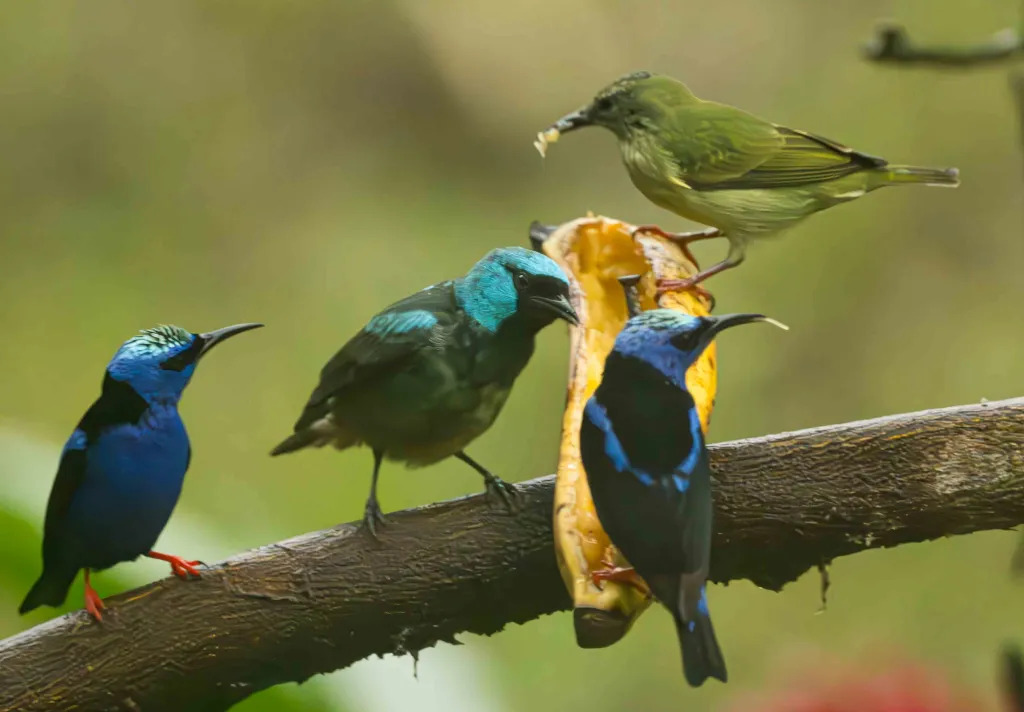How do birds weather the rain Heres a close-up look at their secrets
-

- by Admin
- Nov 07, 2024

It rained pretty much constantly the first five days of our trip to Costa Rica earlier this year, soaking the ground everywhere we went, filling the streams with runoff and making a mockery of our skimpy rain gear. We weren’t fully prepared because it wasn’t the rainy season, though the skies did a good imitation.
We’d come a long way to see the country’s wealth of birds, though, so we still went birding every day – which gave us a close-up look at something we don’t very often witness: How all kinds of species work around the bad weather to find food, feed their young and keep up their migration. It’s a reminder of how good we people have it.
This drenched-to-the-bone Red-footed Honeycreeper could be the poster bird for that watery week. The expression on its face seems to say it all: This isn’t my idea of a good time, but what choice do I have?
An Emerald Tanager flies through the rain
Birds are built for the outdoors, of course. They have water-repellent feathers and some have extra eyelids to protect them from the elements. Many emit enzymes that further shield them from the water. They can fly if they need to almost no matter how bad the wind and rain get.
We saw plenty of birds ducking out of the weather, hunkering down out of the way and hoping for a break. But the demanding existence for birds only becomes more so when the weather turns afoul. The rain brings low-pressure zones that make flight more difficult because the air, in effect, includes further resistance. One remarkable study, conducted in Costa Rica, found that birds show a spike in stress during the rainy times – an unsurprising but still fascinating discovery. (Details below.)
You can almost feel that in these photos of birds struggling with the rain:
The tropical rainy season in the spring and summer brings torrents of rain, but it doesn’t fall all day long the way it did during the first part of our visit. This meant the birds couldn’t just wait out the worst of it. We watched them flying through downpours, scouring for food that was especially hard to find, and from time to time shaking off feathers soaked in water.
One of the species most on display were the tiny hummingbirds. As a rule, they have to feed several times on hour to keep their high-powered metabolism running. We watched them buzzing over dropping flowers, struggling to find sustenance.
Costa Rica’s birding trails are loaded with feeders to bring out the birds for tourists. They’re usually refueled like clockwork, early in the morning and late afternoon. (See our post on this tradition.) With the rain pouring down, many of the birds turned to the feeders as if they were watching that clock. The more the rain fell, the more the supplies of bananas, mangoes and melons looked like small airports with the birds coming and going.
Eventually, the rain slowed down and you could almost sense the rejoicing among the birds. As the insects swarmed in the drying air and flowers perked up with the sunlight, finally the skies were filled with birds.
Just like us, birds can get through the bad weather one way or another, but they clearly prefer the sunny skies.
0 Comments:
Leave a Reply